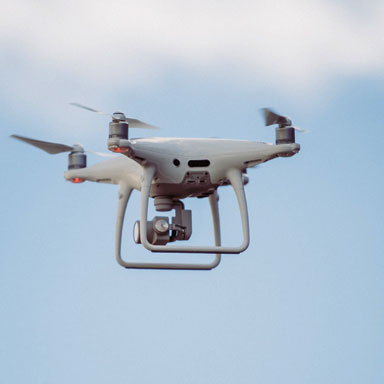‘For a Free Palestine’
How can one make an independent movie from inside the advancing decay of occupation and its ceaseless, cumulative catastrophe? How could such an authoritative background be dealt with? What prospects could move in the range between the proper posts of complete denial and direct resistance? “For a Free Palestine,” a web-based program of works by Palestinian ladies assembled by Daniella Shreir for Another Screen (the programming arm of the women’s activist journal ‘Another Gaze’), is an attempt at certain answers. Those answers variously flash through these works from disparate times, localities, and sensibilities.
This independent movie is free to see, however it is also a fundraising drive for grassroots efforts in Gaza, following Israel’s new assault there, and somewhere else in involved Palestine fights that spread against the planned forced ousting of Palestinians from the Sheik Jarrah area in East Jerusalem. Similarly as, in the news, we saw images of fights by assorted assemblages of Palestinians across the region, from the naturalized 1948 lands and its blended urban areas, to the formerly involved East Jerusalem, to the falsely “autonomous” West Bank, so too does “For a Free Palestine” give understanding into the various configurations and surfaces of occupation. And, past the particulars of its unique circumstance, the program can also be viewed as recognition for independent movie capacity to reflect, and intercede into, the thickness of the present.
A starting place of sorts is Layaly Badr’s ‘The Road to Palestine’ (1985), pedagogic animated short for youngsters. Its straightforward interpretation of a youngster’s account of seeing an aerial besieging is in accordance with how the Palestinian Liberation Organization (PLO) and its active independent movie unit were put resources into introducing a relatively fixed, linear, undisputed Palestinian narrative to the world. However at that point comes the post-PLO, post-Oslo Accords independent movie examinations: autonomous, intelligent, and elusive. The majority of these later movies unfurl in contrasting terrains and freely of institutional propaganda. All through, that authoritative backdrop of occupation is never absent, yet certain decisions (both formal and as far as satisfied) could deliver it unfamiliar, in any event, astonishing. For one, independent movie itself is deciphered as a medium that meddles in the exceptionally narrative it conveys. For another, while auteur hypothesis is regularly held as canon in experimental independent movie of the purported Arab world, here one doesn’t arise through a liberal “I”- subjectivity unspools instead through minute fragments, fixing any strong grand narrative of the battle.
Two independent movies by Razan AlSalah are particularly attentive to the materiality of disappearance. In both Your Father Was Born 100 Years Old, And So Was the Nakba (2017) and Canada Park (2020), the artist utilizes Google Street View to navigate Haifa and Jerusalem, individually, in search of locales that have been permanently altered by the involving forces, yet which wait in memory and fantasy. The apparatus gives a deception of access to these locales even while its virtuality records their inconceivability.
Difficulty, in a persevering saying concerning Palestine, is also dealt with in the multilayered practice of Basma Alsharif, an independent movie maker raised in France, the US, and the Gaza Strip. Measuring Distance (2009), successions of paced independent movie images from the filmmaker’s archive, documentary footage, and staged scenes are poetically altered to various soundtracks, including music from Egyptian star Abdel Halim Hafez’s last performed melody, the 1976 classic “The Fortune Teller,” and a narrator informing us concerning the various forms of measurement that have been undertaken by a certain indistinct “we.” The kinds of counting he depicts conjure yet different countings, similar to how, directed by prosperity apps, you could include your breaths in a forceful effort to be careful. Or on the other hand how, while daydreaming, the migrant counts the inexact miles and hours it would take to cross the immeasurable waters to another shore. And in void time, measuring faces; weariness, regardless of whether it is the measurement of everyday articles and shapes, or the measurements between the places and times that develop history. While motivated by vastly various urgencies, these measurements are all functionally meaningless, highlighting the ultimate absurdity inserted in the realm of assumed exactitude of narrative, of facts and reality.
There is an absurdity, as well, in independent Movies in Gaza (2013), where Alsharif penetrates the family life of the Gaza Strip with intimate imagery of everyday life set to the waiting sound of a low-altitude aircraft or robot, marking how “normalcy” is unattainable in a space that is so exceptionally surveilled. That it is one of the most surveilled places on earth makes it almost paradoxical that, as Alsharif grapples with, Gaza also challenges representation. Enclaved, the Strip is largely cut off from the world, and the scant representations of it that circulate are of a uniform sameness in their torments Gaza’s redundant obliteration has overpowered any ability to see it in itself. Be that as it may, training her independent movie camera on the quotidian, Alsharif considers Gaza to be in excess of a metonym-as a residing place, and as a home.
Getting this issue of overshadowed vision of independent movie maker; Rosalind Nashashibi, who takes to the speculative in ‘Electrical Gaza’ (2015). This work, as well, conveys images of family life, here scattered with animation, as well as an originally created, upbeat score and the initial fanfare of Les Illuminations, Benjamin Britten’s opera interpretation of a set-up of Arthur Rimbaud’s sonnets. Nashashibi overlays unique and additional opportunities, imaginaries, and accounts onto the body of the real. Her zooming into the Strip, through lengthy and repetitive shots and through unraveling associations utilizing arrangement altering, pictures the war-a stricken area with a new interest.
Artist Jumana Manna’s short movies zoom in to shards of subjects that she makes appear as monumental as the figure practice for which she is also known. Four pieces stand out in the program for the particularly harmonious way the two of them set the mode of film itself on display and imagine subjectivity through fragments; there is a fascinating porosity among form and content. From male hooligan culture manifesting in various destinations in East Jerusalem in Blessed Oblivion (2010), to a 1920s photograph of a Palestinian urbanite privileged masquerade party in ‘A Sketch of Manners’ (2013), Manna fearlessly traffics in fragmented particulars, welcoming us to see these fractions not as dependent upon a broader narrative, but instead as entire unto themselves.
In’ A Magical Substance Flows Into Me’ (2015), Manna crafts a whole and formidable ethnographic report of Palestine by re-creating the excursion of a Jewish-German ethnomusicologist who facilitated a radio program during the 1930s for the Palestine Broadcasting Service, for which he welcomed musicians of various genre to perform their vernacular music. We hear various Arabic and Hebrews spoken; we hear tunes and verses having a place with places that are totally other from the flat and binary Palestine of the contemporary imagination. The independent movie revels in the indiscriminate makeup of this other Palestine, experienced here as a sonic map. Manna’s portrayal of Kurdish and Yemenite Jews, Coptic Christians and Arab Bedouins, and others doesn’t just and sorrowfully highlight an Edenic social attachment presently lost to governmental issues, yet rather, and essentially, to the absurdity of nationalizing the hectic make-up of nationalities.
These assorted works of touching independent movie, as the vast majority of the movies Shreir has assembled, produce their results from inside the tangled ambiguity that lies among denial and resistance. Their experimentations with form as well as with fictional, speculative, and hyperrealism narratives wittingly negotiate their status as art objects inside and regardless of the imperious setting of occupation-an over determining setting that can restrict the conceivable outcomes of independent movie making to the meager acts of solemnly recording or sentimentally activating. Instead, “For a Free Palestine” is a meaningful file to the twisted ways that art can tamper with the ties (of force, of legislative issues, of history) that undetectably ruin our discernment.




